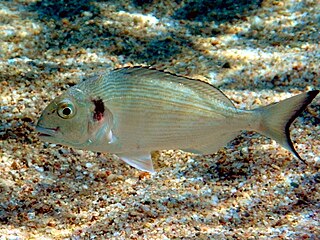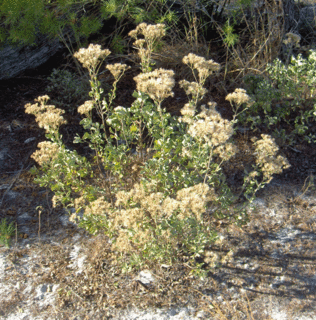
Cetonia aurata, called the rose chafer or the green rose chafer, is a beetle, 20 millimetres long, that has a metallic structurally coloured green and a distinct V-shaped scutellum. The scutellum is the small V-shaped area between the wing cases; it may show several small, irregular, white lines and marks. The underside of the beetle has a coppery colour, and its upper side is sometimes bronze, copper, violet, blue/black, or grey.

The African golden cat is a wild cat endemic to the rainforests of West and Central Africa. It is threatened due to deforestation and bushmeat hunting and listed as Vulnerable on the IUCN Red List. It is a close relative of both the caracal and the serval. Previously, it was placed in the genus Profelis. Its body size ranges from 61 to 101 cm with a 16 to 46 cm long tail.

Megachilidae is a cosmopolitan family of mostly solitary bees. Both that their pollen-carrying structure is restricted to the ventral surface of the abdomen, and their typically elongated labrum is characteristic of this family. Megachilid genera are most commonly known as mason bees and leafcutter bees, reflecting the materials from which they build their nest cells ; a few collect plant or animal hairs and fibers, and are called carder bees, while others use plant resins in nest construction and are correspondingly called resin bees. All species feed on nectar and pollen, but a few are kleptoparasites, feeding on pollen collected by other megachilid bees. Parasitic species do not possess scopae. The motion of Megachilidae in the reproductive structures of flowers is energetic and swimming-like; this agitation releases large amounts of pollen.

Bream ( ) are species of freshwater and marine fish belonging to a variety of genera including Abramis, Acanthopagrus, Argyrops, Blicca, Brama, Chilotilapia, Etelis, Lepomis, Gymnocranius, Lethrinus, Nemipterus, Pharyngochromis, Rhabdosargus, Scolopsis, or Serranochromis.

The genus Megachile is a cosmopolitan group of solitary bees, often called leafcutter bees or leafcutting bees; it also includes the called resin bees and mortar bees. While other genera within the family Megachilidae may chew leaves or petals into fragments to build their nests, certain species within Megachile neatly cut pieces of leaves or petals, hence their common name. This is one of the largest genera of bees, with more than 1500 species in over 50 subgenera. The alfalfa leafcutter bee is managed on a commercial scale for crop pollination, and has been introduced by humans to various regions around the world.

Murina is a genus of vesper bats. They are found throughout temperate and tropical regions of Asia.

The gilt-head (sea) bream, known as Orata in antiquity and still today in Italy and Tunisia, is a fish of the bream family Sparidae found in the Mediterranean Sea and the eastern coastal regions of the North Atlantic Ocean. It commonly reaches about 35 centimetres (1.15 ft) in length, but may reach 70 cm (2.3 ft) and weigh up to about 7.36 kilograms (16.2 lb).

Megachile sculpturalis, known as the giant resin bee and sculptured resin bee, is a species of leafcutting bees belonging to the family Megachilidae.

Garberia is a monotypic genus of flowering plants in the family Asteraceae, containing the single species Garberia heterophylla. It is endemic to Florida in the United States, where it is distributed in the northern and central counties. The plant is known commonly as garberia and Garber's scrub starts.

Crepidodera is a genus of flea beetles in the family Chrysomelidae. There some 40 described species worldwide.
Mordellaria is a genus of tumbling flower beetles in the family Mordellidae. There are more than 10 described species in Mordellaria.

Coelioxys, common name leaf-cutting cuckoo bees or sharp-tailed bees , is a genus of solitary kleptoparasitic or brood parasitic bees, belonging to the family Megachilidae.
Megachile chrysorrhoea is a species of bee in the family Megachilidae.
Megachile mcnamarae is a species of bee in the family Megachilidae.
Megachile odontostoma is a species of bee in the family Megachilidae.
Megachile turbulenta is an invalid species of bee in the family Megachilidae. M. turbulent was described by Mitchell in 1930. Megachile turbulenta has no common name.
Megachile mauritaniae is a species of bee in the family Megachilidae.

Augochlorella aurata is a species of sweat bee in the family Halictidae. It is found in North America east of the Rocky Mountains. The body is a brilliant green metallic color, diffused to varying extents with a copper, red, or yellow color. Its length is 5 to 7 mm. A common name is golden green sweat bee.

Lithurginae is a subfamily of woodborer bees in the family Megachilidae.












